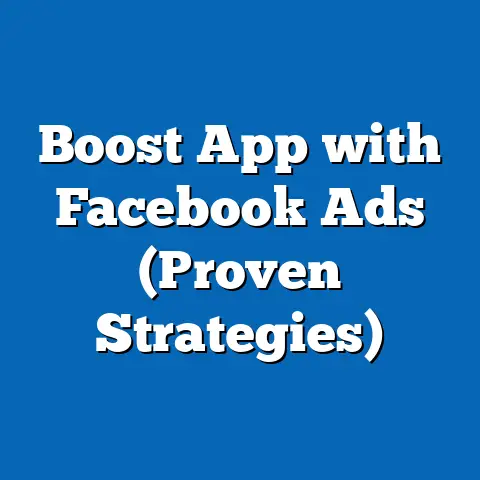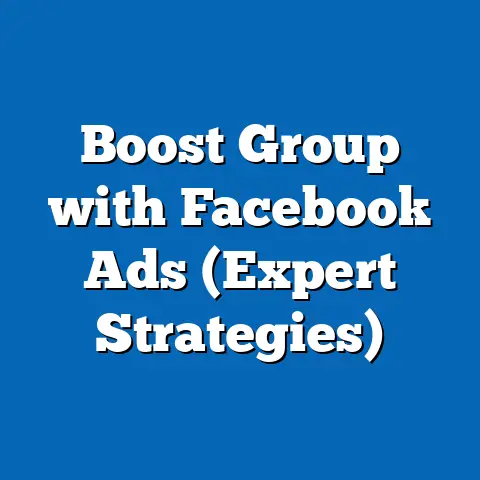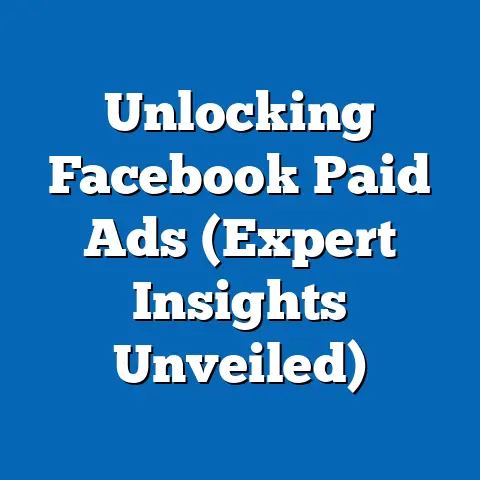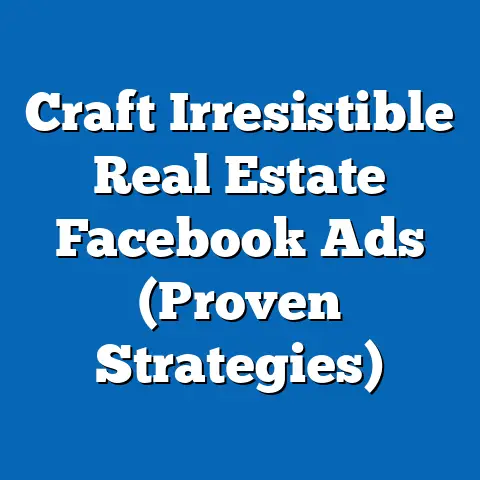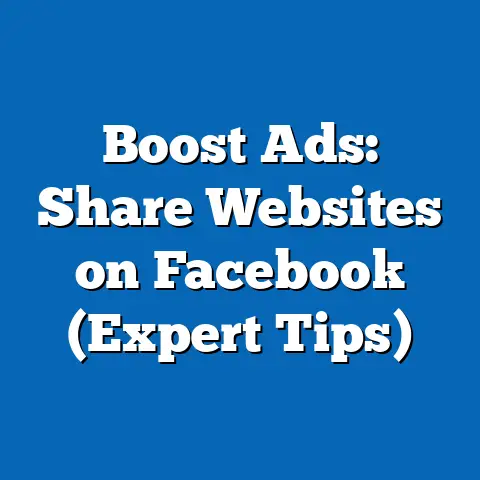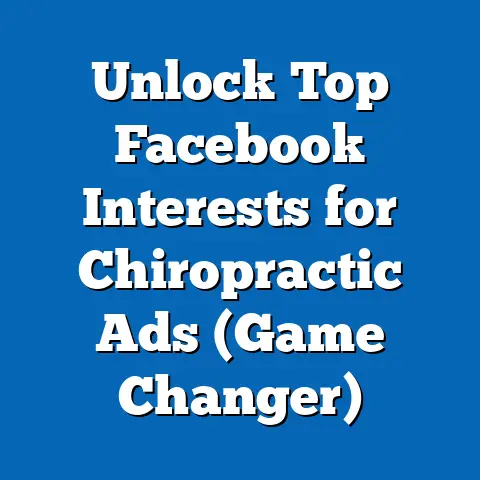Revive Facebook Ads Quickly (Expert Tactics Revealed)
In the 2008 film The Social Network, a dramatized depiction of Facebook’s founding, we see the nascent stages of a platform that would revolutionize communication, social interaction, and, crucially, digital advertising. The movie captures a pivotal moment when the idea of monetizing user data through targeted ads begins to take shape—a concept that would grow into a multi-billion-dollar industry. Facebook, now Meta, has become synonymous with digital marketing, shaping how brands connect with audiences across generations and geographies.
Facebook advertising, launched officially in 2007 with “Facebook Flyers,” emerged during a transformative era of internet adoption. It coincided with the rise of social media as a cultural force, reflecting a shift from traditional media to personalized, data-driven marketing. This article explores the art of reviving underperforming Facebook ads quickly, drawing on expert tactics while situating the discussion within a broader cultural, historical, and societal context.
The societal implications of Facebook ads are vast, influencing consumer behavior, political campaigns, and even global discourse. As we delve into strategies for revitalizing campaigns, we must also consider how these ads have shaped, and been shaped by, generational trends, technological advancements, and economic forces. This comprehensive analysis aims to provide actionable insights for marketers while reflecting on the broader impact of Facebook advertising in the digital age.
Historical Context: The Evolution of Facebook Advertising
Facebook’s advertising journey began in the mid-2000s, a time when the internet was transitioning from a niche tool to a mainstream necessity. The platform initially targeted college students, capitalizing on the Millennial generation’s growing reliance on digital connectivity. By 2007, with the introduction of Facebook Ads, businesses could target users based on demographics, interests, and behaviors—an unprecedented level of precision compared to traditional print or TV advertising.
The timing was critical. The late 2000s saw the aftermath of the dot-com bubble and a global financial crisis, pushing businesses to seek cost-effective marketing solutions. Facebook Ads offered a low barrier to entry, allowing small businesses and large corporations alike to reach niche audiences without the hefty budgets required for mass media.
Over the next decade, Facebook’s ad platform evolved with features like retargeting, lookalike audiences, and dynamic ads. These innovations mirrored broader societal shifts, such as the smartphone boom and the rise of social media influencers, which changed how brands engaged with consumers. Today, with over 2.9 billion monthly active users as of 2023 (Statista), Facebook remains a dominant player in digital advertising, though it faces challenges like privacy concerns, platform saturation, and competition from TikTok and Instagram.
Understanding this historical backdrop is essential when reviving ads. Campaigns that fail often do so because they are misaligned with current user behaviors or platform algorithms, which have evolved significantly since the early days of static banner ads. A historical lens reminds us that adaptability is key—an insight that informs the expert tactics discussed below.
Defining Characteristics of Effective Facebook Ads Across Generations
Facebook’s user base spans multiple generations, from Baby Boomers to Gen Z, each with distinct preferences and digital habits. Crafting effective ads requires an understanding of these differences, avoiding the pitfall of one-size-fits-all campaigns. Let’s explore how generational characteristics influence ad performance and revival strategies.
Baby Boomers (Born 1946-1964): This generation, shaped by post-World War II optimism and the advent of television, often values trust and authenticity in advertising. While less tech-savvy than younger cohorts, many Boomers use Facebook to stay connected with family, making them responsive to ads for health products, retirement services, and nostalgic content. Reviving ads for this group may involve simplifying messaging and focusing on emotional storytelling over flashy visuals.
Generation X (Born 1965-1980): Gen X, often called the “latchkey generation,” grew up during economic uncertainty and the early internet era. They tend to be skeptical of overt marketing but appreciate value-driven content. Ads targeting Gen X on Facebook should emphasize practicality and credibility; reviving underperforming campaigns might mean A/B testing offers or discounts to rebuild trust.
Millennials (Born 1981-1996): As digital natives who came of age during the social media explosion, Millennials prioritize authenticity and social impact. They are likely to engage with ads that align with their values, such as sustainability or inclusivity. Reviving ads for Millennials often involves incorporating user-generated content or influencer partnerships to boost relatability.
Generation Z (Born 1997-2012): Gen Z, raised on smartphones and short-form content, has a notoriously short attention span but a keen eye for trends. They dominate platforms like TikTok but still use Facebook for specific purposes, such as event planning or marketplace purchases. Reviving ads for Gen Z requires dynamic, visually striking content and rapid iteration based on real-time feedback.
These generational nuances highlight a critical point: ad revival isn’t just about tweaking metrics but understanding the cultural and social context of the target audience. While data drives decisions, empathy and relevance are equally important in crafting campaigns that resonate.
Societal Implications: The Double-Edged Sword of Facebook Advertising
Facebook Ads have profoundly influenced society, reshaping everything from consumer behavior to political landscapes. On one hand, they democratized advertising, enabling small businesses to compete with industry giants through precise targeting. On the other hand, they’ve raised ethical concerns about data privacy, misinformation, and psychological manipulation.
The 2016 U.S. presidential election and the Cambridge Analytica scandal brought these issues to the forefront, revealing how targeted ads could sway public opinion on a massive scale. This led to increased scrutiny and regulations like the General Data Protection Regulation (GDPR) in Europe, which forced advertisers to rethink data usage. For marketers reviving campaigns, this means prioritizing transparency and ethical practices to maintain user trust.
Economically, Facebook Ads have fueled the gig economy and e-commerce boom, particularly during the COVID-19 pandemic when online shopping surged. According to eMarketer, global digital ad spending reached $455 billion in 2021, with social media platforms like Facebook capturing a significant share. However, this reliance on digital ads has also widened inequalities, as businesses without digital literacy struggle to keep up.
Culturally, Facebook Ads have normalized hyper-personalization, influencing how we perceive relevance and choice. Yet, this can create echo chambers, reinforcing biases and limiting exposure to diverse perspectives. As we explore revival tactics, it’s worth considering how ads contribute to these broader societal dynamics and whether marketers have a responsibility to mitigate negative impacts.
Technological Factors: Navigating Algorithm Changes and Tools
One of the biggest challenges in reviving Facebook Ads is keeping pace with the platform’s ever-changing algorithm. Updates like the 2021 iOS 14 privacy changes, which limited tracking capabilities, significantly impacted ad performance. Marketers must now rely more on first-party data and creative strategies rather than hyper-targeted retargeting.
Reviving ads often starts with leveraging Facebook’s built-in tools, such as the Ads Manager and Audience Insights, to diagnose underperformance. For instance, a high cost-per-click (CPC) might indicate poor audience targeting or irrelevant creative. Experts recommend using the “Breakdown” feature to analyze performance by demographics, placement, or device, identifying specific areas for improvement.
Automation tools like Advantage+ campaigns can also aid revival by optimizing delivery in real-time. However, over-reliance on automation can backfire if the creative lacks human insight. A balanced approach—combining data-driven tools with intuitive storytelling—is often most effective.
Additionally, staying updated on emerging technologies, such as augmented reality (AR) ads or integration with Meta’s metaverse initiatives, can provide a competitive edge. Reviving a campaign might involve experimenting with interactive formats that align with future-facing trends, ensuring long-term relevance.
Economic Influences: Budget Optimization in Ad Revival
Economic conditions play a significant role in ad performance and revival strategies. During recessions or inflationary periods, consumers tighten budgets, making them less responsive to discretionary spending ads. Marketers must adapt by focusing on value propositions or essential products when reviving campaigns.
Budget allocation is another key consideration. Experts suggest using the 80/20 rule—allocating 80% of the budget to proven performers and 20% to experimental revival tactics. This minimizes risk while allowing for innovation.
Furthermore, understanding the economic diversity within generations is crucial. For example, Millennials burdened by student debt may respond better to budget-friendly offers, while affluent Baby Boomers might prioritize premium services. Tailoring revived ads to these economic realities can significantly boost effectiveness.
Expert Tactics for Reviving Facebook Ads Quickly
Now that we’ve explored the contextual factors shaping Facebook advertising, let’s dive into actionable, expert-backed tactics for reviving underperforming campaigns. These strategies are grounded in data and practical experience, offering a roadmap for marketers seeking quick results.
1. Diagnose Performance Issues with Precision: Start by analyzing key metrics like click-through rate (CTR), conversion rate, and relevance score in Facebook Ads Manager. A low CTR (below 1%) often signals irrelevant creative or poor targeting, while a high cost-per-acquisition (CPA) might indicate issues with the landing page or offer. Use split testing to isolate variables and pinpoint the root cause.
2. Refresh Creative Elements: Visual fatigue is a common reason for ad decline. Swap out images, videos, or copy every 7-14 days to maintain user interest, especially for younger audiences like Gen Z. Incorporate trending formats, such as short-form video inspired by Reels, to align with current user preferences.
3. Refine Audience Targeting: Overbroad or outdated audiences can tank performance. Use lookalike audiences based on high-performing customer segments, and exclude underperforming groups using the “exclude” feature. Post-iOS 14, focus on broader interest-based targeting to compensate for reduced tracking precision.
4. Optimize Ad Placement: Placement impacts visibility and cost. If an ad underperforms on desktop but excels on mobile, reallocate the budget accordingly. Experiment with Stories and Marketplace placements, which often have lower competition and higher engagement for certain demographics.
5. Leverage Retargeting and Dynamic Ads: Retargeting users who’ve interacted with your brand but haven’t converted can yield high ROI. Dynamic product ads, which automatically showcase relevant items from a catalog, are particularly effective for e-commerce. Revive campaigns by updating retargeting windows (e.g., from 30 to 14 days) to capture more immediate intent.
6. Test New Offers or Incentives: A stagnant offer can bore audiences. Introduce limited-time discounts, free trials, or bundled deals to reignite interest. Monitor performance closely to ensure the offer aligns with audience expectations and doesn’t erode profit margins.
7. Adjust Bidding Strategies: If costs are soaring, switch from automatic to manual bidding to control expenses. Alternatively, test value-based bidding to prioritize high-lifetime-value customers. Revival often requires balancing cost efficiency with reach, especially in competitive niches.
8. Monitor Frequency and Ad Fatigue: High ad frequency (above 3-4 impressions per user) can annoy audiences, lowering engagement. Use frequency capping or rotate ad sets to keep content fresh. For long-running campaigns, a full creative overhaul may be necessary to combat fatigue.
9. Utilize Social Proof: Incorporate reviews, testimonials, or user-generated content to build trust, particularly for skeptical generations like Gen X. Reviving ads with low credibility might involve highlighting endorsements or community engagement to boost click-throughs.
10. Iterate Based on Real-Time Data: Facebook’s ad platform thrives on agility. Set daily or weekly check-ins to assess performance, using tools like automated rules to pause underperforming ads. Quick iteration—adjusting one element at a time—ensures continuous improvement without overwhelming the campaign structure.
These tactics, when applied thoughtfully, can turn struggling campaigns around in days or weeks. However, success depends on aligning strategies with the cultural, generational, and technological factors discussed earlier.
Workplace and Industry Implications
Reviving Facebook Ads isn’t just a marketing challenge; it has implications for workplace dynamics and industry trends. For marketing teams, the need for rapid adaptation fosters a culture of experimentation and data literacy. Employees must be trained in analytics tools and creative software to keep pace with platform changes, highlighting the importance of upskilling in the digital economy.
At an industry level, the reliance on platforms like Facebook for advertising revenue underscores the power imbalance between tech giants and smaller players. Businesses that master ad revival gain a competitive edge, while those that lag risk obsolescence. This dynamic fuels innovation but also raises questions about market fairness and data monopolies.
Moreover, as privacy regulations tighten, industries must pivot toward ethical advertising practices. Reviving ads in this context means prioritizing consent and transparency, which could reshape consumer trust and brand loyalty in the long term.
Forward-Looking Insights: The Future of Facebook Ads
Looking ahead, the landscape of Facebook advertising is poised for further transformation. Meta’s investment in the metaverse suggests a future where immersive, interactive ads could redefine engagement, though adoption remains uncertain given current technological and cultural barriers. Privacy trends will likely continue to challenge targeting precision, pushing marketers to focus on content quality over data reliance.
Generational shifts will also play a role. As Gen Z and Alpha (born post-2012) become larger consumer segments, ads must adapt to shorter attention spans and a preference for authenticity over polish. Meanwhile, aging populations in developed countries will sustain demand for Boomer- and Gen X-targeted campaigns, emphasizing the need for diverse strategies.
Economic uncertainties, such as potential recessions or inflation, could further impact ad budgets and consumer behavior, making revival tactics even more critical. Marketers who master agility and empathy will be best positioned to navigate these unknowns.
Finally, the ethical dimension of advertising cannot be ignored. As society grapples with the societal impacts of digital ads—from mental health concerns to misinformation—there’s a growing call for responsibility. Reviving ads quickly must balance business goals with a commitment to positive impact, a challenge that will define the industry’s future.
Conclusion: Balancing Revival with Responsibility
Reviving Facebook Ads quickly is both an art and a science, requiring a deep understanding of data, creativity, and cultural context. The expert tactics outlined—ranging from creative refreshes to audience retargeting—provide a practical framework for marketers seeking immediate results. Yet, as this analysis has shown, success extends beyond metrics to encompass generational nuances, technological trends, and societal implications.
Facebook advertising, born in an era of digital optimism, has grown into a powerful force with far-reaching consequences. Its ability to shape consumer behavior, influence politics, and drive economic growth comes with a responsibility to address privacy, equity, and ethical concerns. As we look to the future, the challenge lies in reviving campaigns not just for profit, but for purpose—ensuring that ads contribute positively to the digital ecosystem.
While uncertainties remain, one thing is clear: adaptability will define the next chapter of Facebook advertising. By blending historical insight, data-driven strategies, and a forward-thinking mindset, marketers can breathe new life into campaigns while navigating the complex, ever-evolving world of social media advertising.

